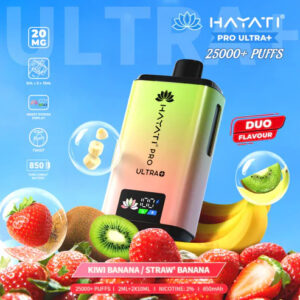Immersive Email: What It Means for My Inbox Experience
Email remains one of the most widely used communication tools, whether for personal updates, business transactions, or marketing messages. Yet...
Email remains one of the most widely used communication tools, whether for personal updates, business transactions, or marketing messages. Yet for many, the inbox often feels cluttered with text-heavy, repetitive messages that fail to hold attention. As digital interactions evolve, new forms of communication are emerging to make email more engaging and interactive.
The rise of Immersive Email brings a new perspective to the inbox. It transforms email from a static message into a dynamic experience, reshaping how people view, interact with, and respond to digital communication.
What Makes an Email Immersive
Immersive email is designed to go beyond plain text and static images. It uses interactive and media-rich elements to create a more engaging experience for recipients.
- Interactive features: Elements such as clickable product views, carousels, or mini forms allow users to engage directly within the email. Instead of being redirected, they can interact instantly.
- Embedded media: Videos, animations, and dynamic graphics help convey messages more effectively than long paragraphs of text.
- Personalization layers: Data-driven personalization ensures that each email feels relevant to the recipient, reflecting their interests or past behavior.
- Real-time updates: Some immersive emails refresh content, such as inventory or countdown timers, at the moment they are opened.
Why Immersive Email Matters
The shift toward immersive formats is not just about aesthetics. It addresses the challenges that traditional email has struggled with for years.
- Shorter attention spans: Recipients are more likely to engage with interactive visuals than blocks of text.
- Higher competition: With inboxes flooded daily, standing out requires innovation that captures interest.
- Consumer expectations: As users get accustomed to interactive digital environments, static emails feel outdated.
- Brand differentiation: Companies adopting immersive formats position themselves as forward-thinking and customer-focused.
Benefits for Recipients
While immersive design is often discussed from a brand perspective, it also changes the user experience for recipients.
- Faster understanding: Instead of scrolling through text, users can grasp information at a glance with visual storytelling.
- Convenience: Interactive elements reduce the number of clicks, saving time for recipients.
- Engagement enjoyment: An email that feels interactive is more enjoyable, making recipients more open to future messages.
- Clarity in decision-making: Features like product previews or embedded FAQs help people make faster and more confident choices.
Challenges of Immersive Email
Despite the benefits, immersive formats are not without drawbacks. Both senders and recipients must navigate certain challenges.
- Compatibility issues: Not all email clients support advanced interactive features, which may limit the experience for some users.
- Load times: Media-heavy emails can take longer to open, frustrating recipients with slower connections.
- Accessibility concerns: Designs that focus heavily on visuals must still remain readable and functional for all users, including those with disabilities.
- Overuse risk: If every email becomes overly interactive, recipients may quickly tire of the novelty.
How Immersive Email Works Technically
To understand its possibilities and limitations, it helps to look at how these formats function.
- HTML and CSS advancements: Modern coding standards allow for dynamic layouts and animations directly within emails.
- AMP for Email: A technology supported by some platforms enables live content and app-like functionality inside messages.
- Data integration: Linking emails with customer data systems allows for real-time personalization and updates.
- Testing protocols: Because not all features work in every client, developers run tests across platforms to ensure usability.
Practical Use Cases
Immersive email is not limited to one industry; its applications are broad and growing.
Retail and E-Commerce
Brands use immersive formats to show interactive product carousels, letting customers browse items without leaving their inbox.
Events and Entertainment
Organizers embed ticket selection, schedules, or video previews, making it easier for users to register or explore.
Financial Services
Banks and fintech firms provide interactive statements or calculators, giving customers insights without external links.
Education and Training
Institutions send interactive lessons or progress trackers, transforming the inbox into a mini learning platform.
How to Decide If It’s Worth Implementing
For businesses, the decision to adopt immersive formats must balance benefits against costs and challenges.
- Know your audience: If most recipients use email clients that do not support immersive features, adoption may not deliver value.
- Set clear goals: Define whether the aim is to increase engagement, improve convenience, or build brand differentiation.
- Start small: Test immersive elements in specific campaigns before committing to a full rollout.
- Measure results: Track metrics like open time, click-through rates, and completion of in-email actions to assess impact.
- Maintain accessibility: Always provide fallback options such as plain-text alternatives to ensure inclusivity.
The Future of Inbox Experiences
Immersive formats signal the start of a broader shift in email communication. As technology evolves, inboxes may resemble mini digital platforms rather than message repositories. With ongoing support from major email clients, the line between websites and emails could blur even further. While innovation will continue, trust, usability, and value will remain the core drivers of adoption.
Conclusion
Emails are no longer confined to static text and images. Immersive formats allow recipients to interact, learn, and make decisions without leaving their inbox. For users, this creates a more enjoyable and efficient experience; for businesses, it opens new opportunities for differentiation and engagement.
However, success depends on careful planning, accessibility, and meaningful use of the technology. The evolution of digital communication shows that as immersive formats expand, they may soon intersect with innovations such as XR emails, creating a future where inboxes feel like fully interactive platforms rather than simple messaging tools.





